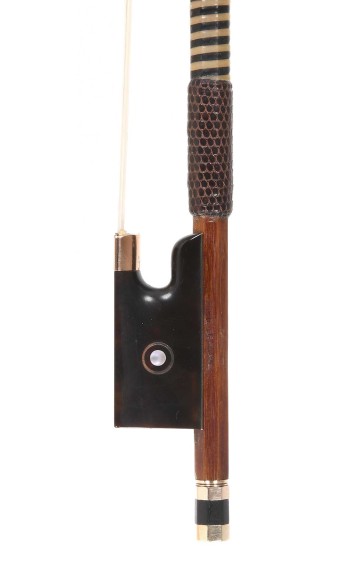Markneukirchen bow makers and the origins of violin bow making in Germany
As the art of building stringed instruments flourished in Markneukirchen, it had several effects which not only included in a greater division of labour in violin making. In addition, related businesses evolved: manufacturers began producing strings, and bow makers opened workshops in Markneukirchen which rank among the oldest and most important in Germany. Despite the fact that efforts to establish a separate guild of Markneukirchen bow makers failed in 1790 due to opposition from the violin makers' guild, this nevertheless reflects that manufacturing fine bows for stringed instruments had become its own distinct tradition in Markneukirchen.
Markneukirchen bow making overview:
- Markneukirchen bow maker Knopf
- Pfretzschner, a Markneukirchen bow maker family
- Markneukirchen bow maker Rau
The Knopf family of Markneukirchen bow makers
One of the first to make bows in Germany was bow maker Christian Wilhelm Knopf (1767-1837), the pater familias of a large line of bow makers. As a brilliant master and the inventor of the metal eyelet for the frog, he continued the tradition of the European pioneers of bow makers, John Dodd (1752-1839) and François Xavier Tourte (1747–1835). C. W. Knopf's descendants went on to make names for themselves far beyond the Vogtland region; here special mention should be made of Heinrich "Henry" Knopf (*1860) and J. Wilhelm Knopf (b. 1835), whose contemporaries regarded him as the country's finest bow maker.
Bow maker Hermann Richard Pfretzschner
Hermann Richard Pfretzschner (1857–1921), son of an important Markneukirchen family of violin makers and merchants, attained international acclaim: the last major student of J. B. Vuillaume was the pioneer of French bow making standards in Germany.
August Rau, Markneukirchen bow maker
Markneukirchen bow maker August (b. 1866) produced outstanding violin and cello bows which can hold their own in comparisons to French masterpieces. After his apprenticeship in Markneukirchen, August Rau studied under Wilhelm Knopf and A. R. Weichold in Dresden before returning to his hometown to open his own workshop. August Rau used his excellent craftsmanship to craft pernambuco wood into both light and heavy bows.
Related articles:
On the history of the violin bow
Ludwig Bausch: the "German Tourte"
Hopf: a dynasty of Vogtland violin makers
Fine stringed instruments and bows of Germany, Italy, France and other countries







